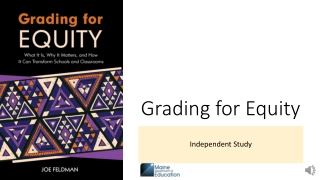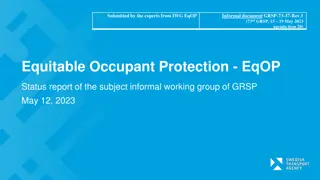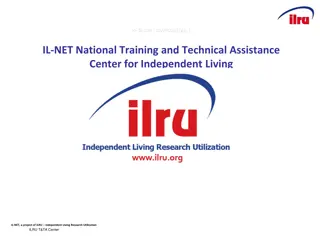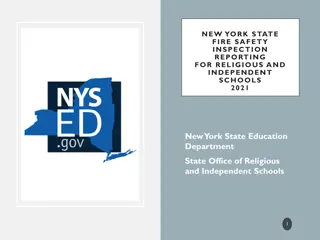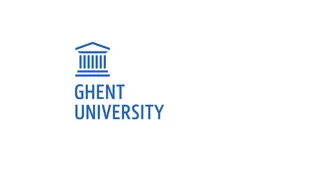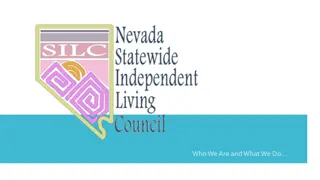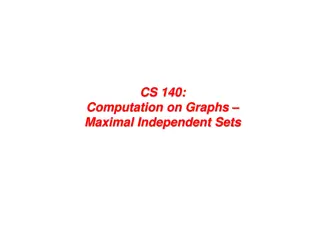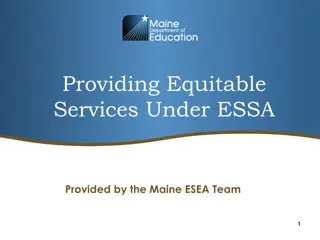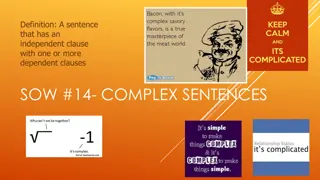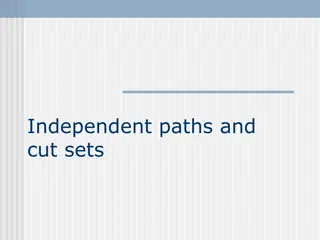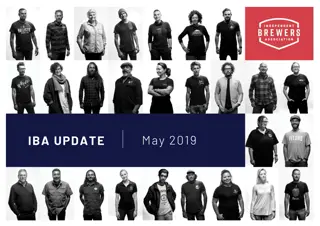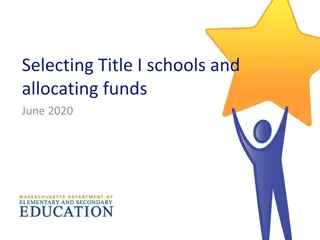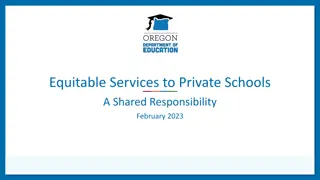Understanding Equitable Services to Independent Schools
Explore the guidelines for providing federal education aid to students in need attending independent schools, as mandated by the Elementary and Secondary Education Act. Learn about eligibility criteria, consultation processes, and funding allocation. Discover the complexities of Title I eligibility for independent schools within catchment areas. Access a comprehensive overview to facilitate equitable services in the education sector.
Download Presentation

Please find below an Image/Link to download the presentation.
The content on the website is provided AS IS for your information and personal use only. It may not be sold, licensed, or shared on other websites without obtaining consent from the author. Download presentation by click this link. If you encounter any issues during the download, it is possible that the publisher has removed the file from their server.
E N D
Presentation Transcript
Equitable Services to Independent Schools March 8, 2021
Topics Background Who s Eligible? Outreach Determining Amounts Consultation Providing Services Questions
Background Federal law allows federal education aid to be provided to children in need, regardless of whether they attend a public or eligible independent school. The Elementary and Secondary Education Act (ESEA / ESSA) requires that eligible independent schools be invited to participate in Titles I, II, III and IV, coordinated by LEAs ESSA Sec. 1117 / ESSA Sec. 8501
Background Essentially, LEAs that receive CFP funds are obligated to facilitate the participation of eligible independent schools in these funds.
Whos Eligible? Non-profit, approved or recognized independent elementary and secondary schools, including those that are religiously-affiliated. Standalone independent Pre-Ks are not eligible. However, in eligible elementary and secondary schools that include Pre-Ks, these students and staff members can be served An updated list of eligible schools was sent in February and can be found here
Whos Eligible (for which funds)? Non-profit, approved/recognized schools within the LEA s boundaries: Titles I*, II, III, IV Non-profit, approved/recognized schools beyond the LEA s boundaries: Title I*
*Whos Eligible: The Complicated Case of Title I Independent schools eligible to participate in Title I are schools that Are non-profit, approved/recognized AND Enroll students who are Residents of a Title I-served catchment area within the LEA in other words, would have attended a public Title I school AND From households that are low-income
*Whos Eligible: The Complicated Case of Title I Title I funds follow students who meet both criteria, including to eligible independents outside of the LEA. This means that an eligible independent school may receive Title I funds from multiple LEA.
Whos Eligible: Do Title I funds follow her? A fourth grader who lives in Coolidge SD attends Lakeview Christian Academy, a non-profit independent school in a neighboring LEA. 1. The student s household is not low-income, but she resides in the attendance area of a Title I-served elementary school. No. 2. The student s household is low-income, but she resides in the attendance are of a non-Title I elementary school. No. 3. The student s household is low-income, and she resides in the attendance area of a Title I elementary school. Yes.
Outreach Outreach to eligible independent schools should occur in the late winter or spring, before initial CFP applications for the coming fiscal year are submitted. Outreach is the responsibility of the LEA, however Identifying schools outside of the LEA s boundaries that are eligible for Title I participation can be challenging. Independent schools are being encouraged to contact LEAs if they have not been invited to participate in Title I and believe that they enroll student who drive funds.
Outreach The initial communication typically includes An invitation to participate in funds in the coming fiscal year A brief description of funds that the independent school is eligible to participate in For schools within the LEA, Titles I (if enrolling qualifying students), II, III (if applicable), and IV For schools beyond the LEA, Title I (if enrolling qualifying students) An Intent to Participate section A reasonable deadline for response
Outreach I will share a letter template Outreach attempts to eligible schools should be documented Some LEAs use certified letters, though date-stamped emails are also common
Determining Amounts: Title II and Title IV Remember, only eligible independent schools within the boundaries of the LEA are eligible to take part in Titles II and IV. The amounts of Title II or Title IV funds available for equitable service to independent schools are based on total enrollment. Low-income status and residence are not considered.
Determining Amounts: Title II and Title IV 1. The LEA determines the total enrollment of public schools & total enrollment of participating independent schools within the boundaries of the LEA. LEAs and independent school officials should come to agreements on acceptable, accurate enrollment numbers during outreach and consultation. 2. These proportions are applied to the LEA s annual IIA or IVA allocation (not including carryforward) to determine the total equitable services set-aside amount.
Determining Amounts: Title II/IV in GMS Equitable Share Tab / Title IIA (or Title IVA) Participation Sub-Tab
Determining Amounts: Title II/IV in GMS Equitable Share Tab / Amounts by School Sub-Tab -LEAs break down total amount by hand, proportionally
Determining Amounts: Title III* 1. The LEA determines the number of ELs in public schools & number of ELs in participating independent schools within the physical boundaries of the LEA. Residence and household income are not considerations. 2. These proportions are applied to the total IIIA allocation to determine the equitable services set-aside amount
Determining Amounts: Title III in GMS Equitable Share Tab / Title IIIA Participation Sub-Tab
Determining Amounts: Title I Remember, independent schools both within and beyond the boundaries of the LEA may be eligible to take part in Title I Total amount of Title I funds available for equitable service to independent schools is based on the number of students who are Residents of a Title I-served catchment area within the LEA From households that are low-income
Determining Amounts: Title I 1. The LEA determines its attendance areas (schools) that will participate in Title I in the coming year. 2. The LEA determines the number of children from low-income households residing in these attendance areas who attend public schools, and the number who attend independent schools. Need to work with independent schools to determine. 3. The LEA applies these proportions to the annual Title I allocation (not including carryforward) to determine the total set-aside amount
Determining Amounts: Title I in GMS Targeting and Ranking, Step 1A:
Consultation Collaboration with eligible, interested independent schools in order to design and develop the equitable services program Must be timely and meaningful
What is Timely? Before the LEA makes any decisions about reserving, transferring or consolidating funds. Before the LEA makes any decisions about activities and opportunities for independent schools to participate
What is Meaningful? Genuine opportunity for all parties to express their views, and all views seriously considered. The LEA may initiate consultation with a proposal for services. Final decisions made by the LEA after consultation.
Consultation Topics How the needs of eligible private school students and staff have been identified What services the LEA will offer to eligible students and staff How, where, when and by whom the services will be provided How the efficacy of services will be assessed and how the results will be used to improve services
Consultation Topics: Title I Title I: How many independent school students reside in an LEA attendance area that is served by Title I? Need addresses. Title I: Of these students, which are from low-income families? Use the same low-income measure that the LEA uses (typically FRL); or Use comparable poverty data from a different source, such as a tuition assistance, parent income survey, etc.; or Use Proportionality. Assume that independent school students who reside in a Title I- served attendance area experience the same rate of poverty as public-school students. For example, if Public School A has a low-income rate of 40%, assume that 40% of independent school students who reside in Public School A s attendance area are from low- income households.
Consultation: Documentation Written, signed affirmation of consultation with each eligible independent school within and beyond the boundaries of the LEA OR written, signed affirmation of an Independent School choosing not to participate OR documentation of attempts to contact/consult Beginning this year, LEAs must use the AOE form to document the results of outreach and consultation. These forms will be collected by the AOE annually.
Providing Services Activities are written into the CFP application, just like investments for the LEA s public schools, and are budgeted accordingly. Activities must meet same standards of allowable, reasonable, necessary, allocable and supplemental.
Services: Control of Funds The LEA controls all funds, title to materials, equipment, and property purchased. Independent schools receive services, not funds, and have no authority to spend. Reimbursement is not allowed. The LEA plans, designs, and implements program (including procurement, ordering, payments, etc) this can not be delegated to the independent school.
Services: Personnel Personnel services (interventionists, coaching, counseling, etc) must be provided by an employee of the district or a 3rd party contractor. Services for private school children should begin at the same time as services for public school children.
Services: Equipment and Supplies The LEA may place equipment and supplies in a private school for the period of time needed for the program, and only for the program. LEA should take biannual inventory of equipment and supplies placed in independent schools. Use, management and disposition of equipment and supplies should follow Uniform Grants Guidance 200.313 ( Equipment ). Materials must be neutral, secular, and non-ideological
Services: Professional Development LEA may pay stipends directly to independent school teachers for participation in PD activities. LEA may not pay for independent school substitute teachers. Must be neutral, secular and non-ideological, at least the portion funded by the grant
Services: Obligation of Funds Funds allocated to an LEA for educational services and other benefits to eligible independent schools must be obligated in the fiscal year for which the funds are received by the LEA. There may be extenuating circumstances, however, in which an LEA is unable to obligate all funds within this timeframe. Under these circumstances, the funds may remain available for the provision of equitable services during the subsequent school year.
Services: Title I Independent Schools that participate in Title I must operate as a Targeted Assistance school need to identify a caseload Students who reside in participating public school attendance areas (i.e., the area of a Title I Part A School); and Are identified as eligible through multiple, educationally-related criteria. As with public Title I schools, low-income status is what drives funds to the independent school it is not the criteria for determining which students to serve.
Services: Title I LEA of residence is responsible for providing Title I services for its eligible students, even if the students attend an independent school in another LEA. Resident LEA may reimburse a lead LEA to provide services on its behalf, typically the LEA in which the school is located. This lead LEA may conduct consultation and write investments on behalf of other LEAs, if the independent school is in agreement
Questions Do I have to conduct outreach concerning Title I participation to non-profit independent schools across state lines? Yes. Do I have to conduct outreach concerning equitable participation to non- profit independent schools in which students are placed by the LEA, including students eligible for special education? Yes. My LEA does not operate a high school do Title I funds still follow our high school-aged students to eligible independent schools both within and outside of the LEA? No. These students do not meet the criteria of residing in the attendance area of a public Title I-served school.
Ombudsman Serve as the primary point of contact for addressing questions and concerns from independent school officials and LEAs regarding the provision of equitable services Monitor and ensure the equitable services requirements Jesse Roy | jesse.roy@vermont.gov | (802) 828-1390


